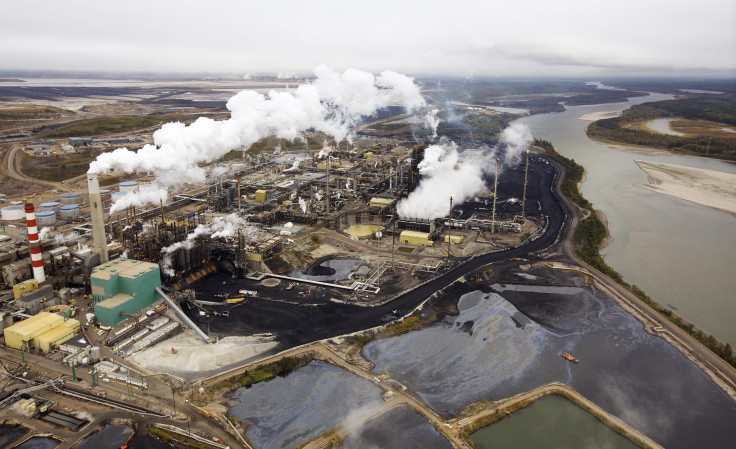Keystone XL Pipeline Debate: Canadian Oil Sands Crude Produces Greater Emissions Than Conventional Oils, DOE Study Finds

Opponents of the proposed Keystone XL pipeline from Canada to Texas may have another arrow in their quiver. A new study funded by the U.S. Department of Energy found crude extracted from Canada’s oil sands region leads to greenhouse gas emissions that are 20 percent higher on average than emissions from conventionally produced U.S. crude.
President Barack Obama, who has the final say on the pipeline’s approval, has said he won’t green-light the project if it significantly exacerbates global warming pollution. Critics have dubbed the Keystone XL a carbon bomb because Canadian oil sands crude requires extensive amounts of energy to extract, process and refine compared with other types of crude.
“All crudes are not created equally,” Hao Cai, the study’s lead researcher at the DOE’s Argonne National Laboratory, told the Wall Street Journal.
Researchers looked at 27 oil sands projects in Canada’s Alberta province from 2008, calculating the total “well-to-wheel” emissions from oil field extraction, processing, refining, transport and final consumption. The peer-reviewed study was conducted jointly by the Argonne lab, Stanford University and the Institute of Transportation Studies at the University of California, Davis.
The team found that gasoline and diesel derived from Canadian oil sands crude emits 18 percent to 21 percent more greenhouse gas emissions than the same products made from conventional U.S. crude. Unlike other oil, this Canadian crude must be mined or melted out of the ground. The tarlike substance must then be processed before it’s suitable for refining, another energy-intensive stage.
The DOE has not yet officially announced the study’s results, but the academic journal Environmental Science & Technology published an abstract this month, the Wall Street Journal reported late Tuesday.
The study is the largest of its kind to date, Adam Brandt, a co-author of the report and assistant professor at Stanford, told the newspaper. “No one has generated a data set as comprehensive as this,” he said. “It’ll provide greater clarity for the regulatory process.”
Brandt recently helped create a related project, called the Oil-Climate Index, which calculates the carbon costs of 30 different types of crude and their related petroleum products. Stanford, the University of Calgary in Canada and the Carnegie Endowment for International Peace, a Washington think tank, are jointly developing the ongoing study.
The dirtiest oil in the index was Suncor Energy’s Synthetic H blend from the Canadian oil sands.
The researchers have said such measurements are increasingly needed as the world shifts away from easy-to-access, lighter conventional oil and moves toward harder-to-reach and heavier unconventional crudes. In comparing oils from across the globe, the index revealed a more than 80 percent difference between the lowest- and highest-emitting crudes.
“You realize very quickly that there’s a lot of differences that … are all hidden under one term called oil,” Deborah Gordon, who directs the Carnegie Endowment's Energy and Climate Program, said in a March interview. “I don’t think that’s going to be adequate for investors in the 21st century, or for governments permitting projects, or for the environmental community.”
© Copyright IBTimes 2024. All rights reserved.





















